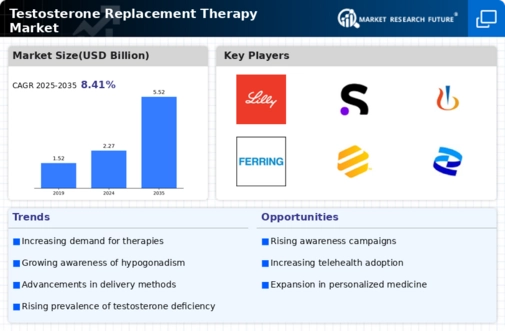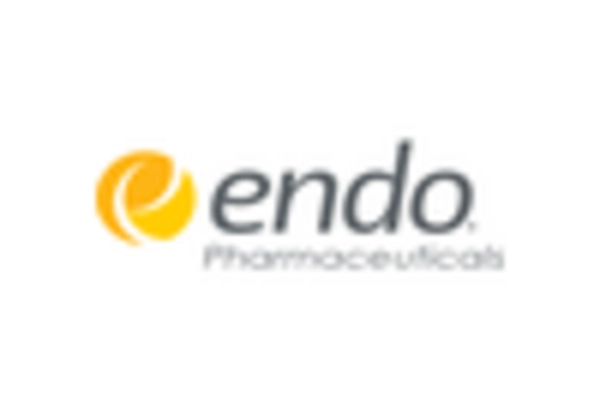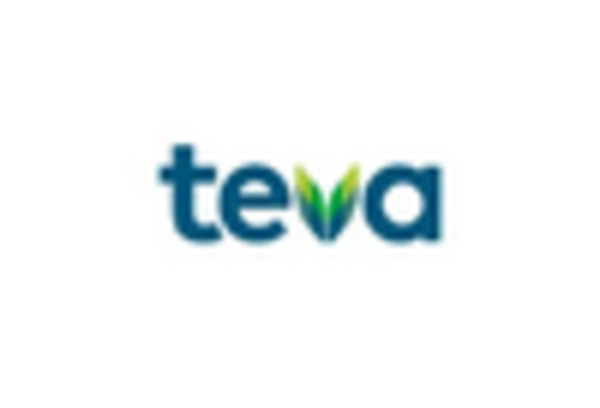Advancements in Delivery Methods
Advancements in delivery methods for testosterone replacement therapies are poised to enhance the Testosterone Replacement Therapy Market. Innovations such as transdermal patches, gels, and injectable formulations are providing patients with more convenient and effective options. These advancements not only improve patient compliance but also expand the potential user base. Market data suggests that the transdermal segment is experiencing rapid growth, attributed to its ease of use and reduced side effects compared to traditional methods. As manufacturers continue to invest in research and development to create more efficient delivery systems, the market is likely to benefit from increased adoption rates and a broader range of therapeutic options.
Increasing Prevalence of Hypogonadism
The rising prevalence of hypogonadism among men appears to be a primary driver for the Testosterone Replacement Therapy Market. Studies indicate that approximately 39% of men aged 45 and older may experience low testosterone levels, which can lead to various health issues. This growing awareness of hypogonadism is prompting more men to seek treatment options, thereby expanding the market. As healthcare providers increasingly recognize the importance of diagnosing and treating low testosterone, the demand for testosterone replacement therapies is likely to surge. Furthermore, the increasing incidence of lifestyle-related factors, such as obesity and diabetes, which are linked to low testosterone levels, may further contribute to the market's growth.
Growing Acceptance of Hormone Replacement Therapy
The growing acceptance of hormone replacement therapy among both healthcare professionals and patients is influencing the Testosterone Replacement Therapy Market. Increased education and awareness regarding the benefits and risks associated with testosterone therapy have led to a more favorable perception. Recent surveys indicate that a significant percentage of men are now more open to discussing testosterone therapy with their healthcare providers. This shift in attitude is likely to result in higher prescription rates and increased market penetration. Additionally, as more clinical studies validate the efficacy and safety of testosterone replacement therapies, the market may experience accelerated growth, driven by both patient demand and physician endorsement.
Aging Population and Demand for Anti-Aging Solutions
The aging population is another significant driver for the Testosterone Replacement Therapy Market. As life expectancy increases, a larger segment of the population is entering the age bracket where testosterone levels naturally decline. This demographic shift is leading to a heightened demand for anti-aging solutions, including testosterone replacement therapies. According to demographic data, the number of men aged 65 and older is projected to double by 2050, creating a substantial market opportunity. The desire for improved quality of life and vitality among older men is likely to fuel the adoption of testosterone therapies, as they seek to mitigate the effects of aging. Consequently, this trend may lead to a robust expansion of the market.
Rising Healthcare Expenditure and Insurance Coverage
Rising healthcare expenditure and improved insurance coverage for testosterone replacement therapies are contributing to the growth of the Testosterone Replacement Therapy Market. As healthcare systems evolve, there is a noticeable increase in the allocation of funds towards men's health initiatives, including hormone therapies. Many insurance providers are beginning to cover testosterone treatments, making them more accessible to a larger population. This trend is particularly evident in regions where healthcare policies are becoming more inclusive of preventive and therapeutic measures for low testosterone. Consequently, the combination of increased healthcare spending and better insurance coverage is likely to drive market growth, as more men seek treatment for low testosterone levels.

















Leave a Comment